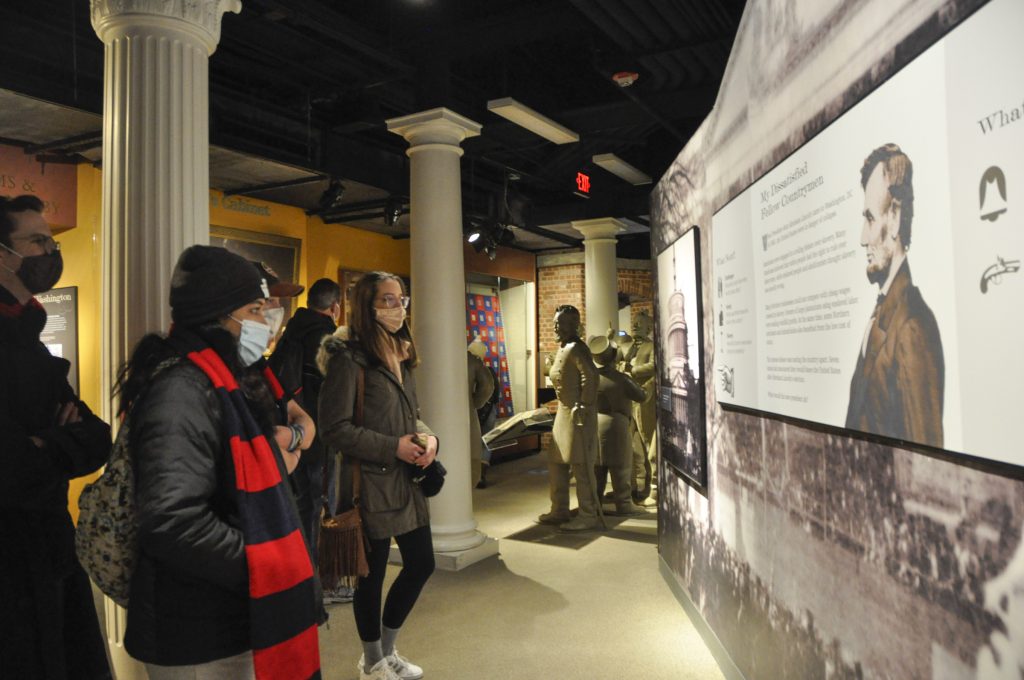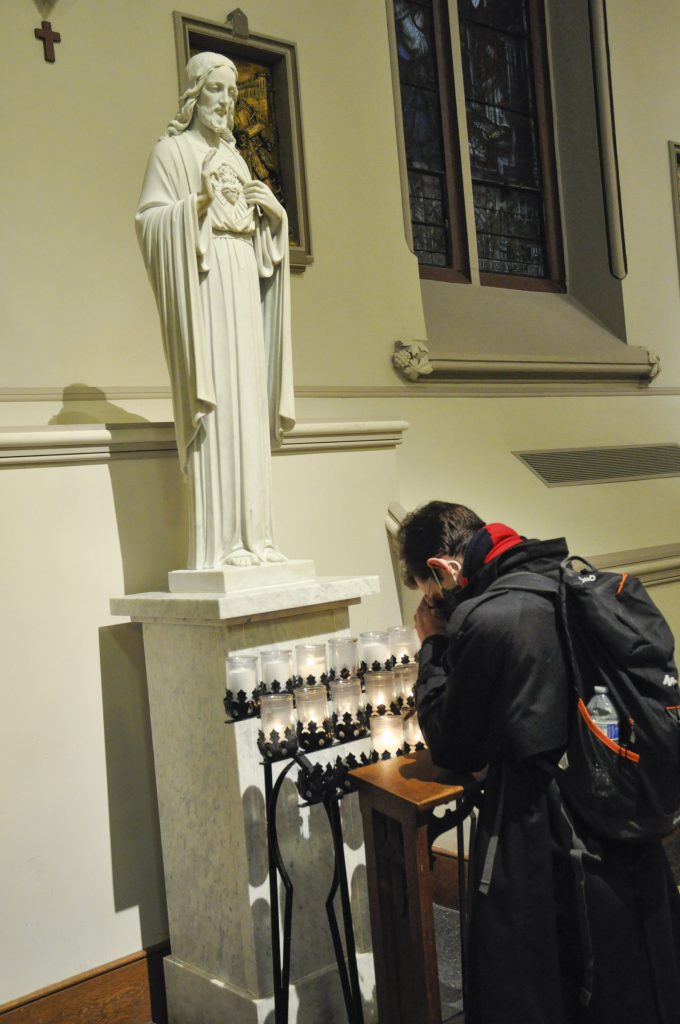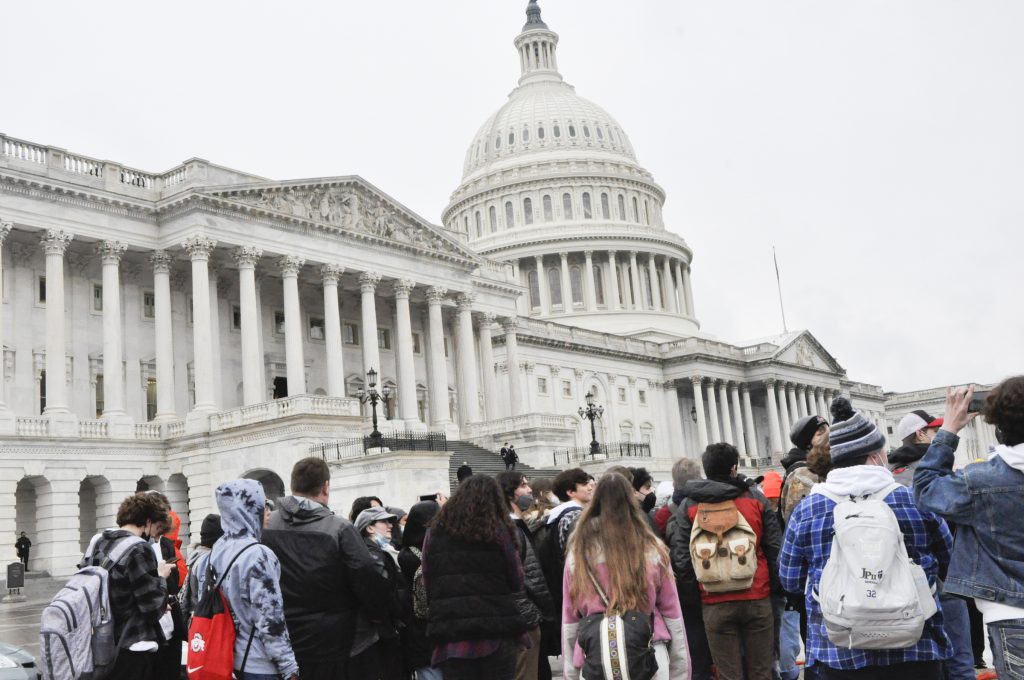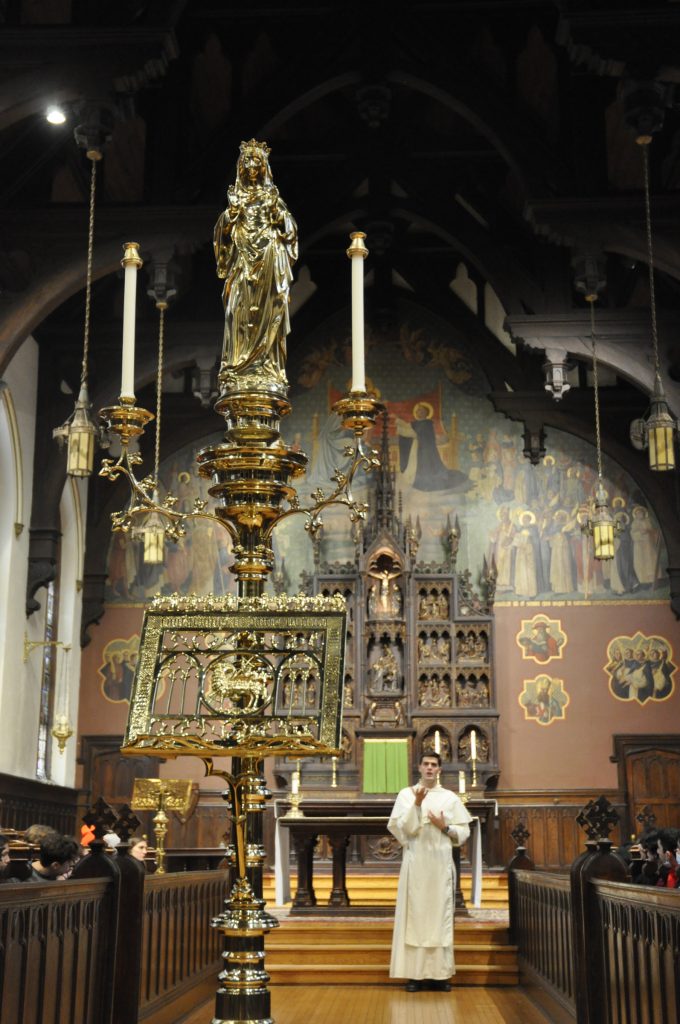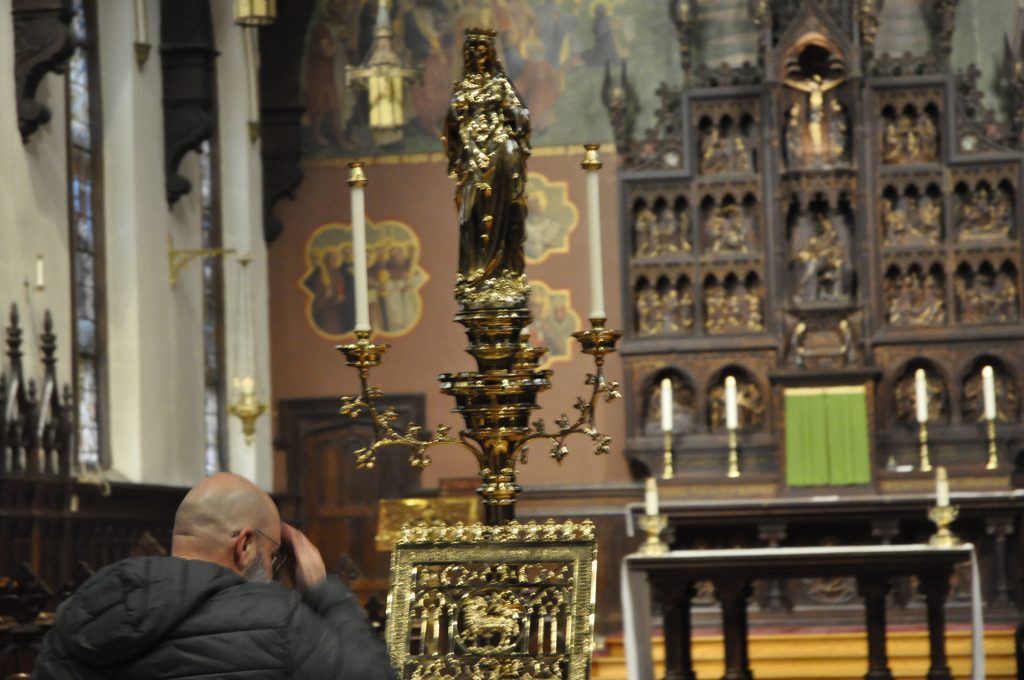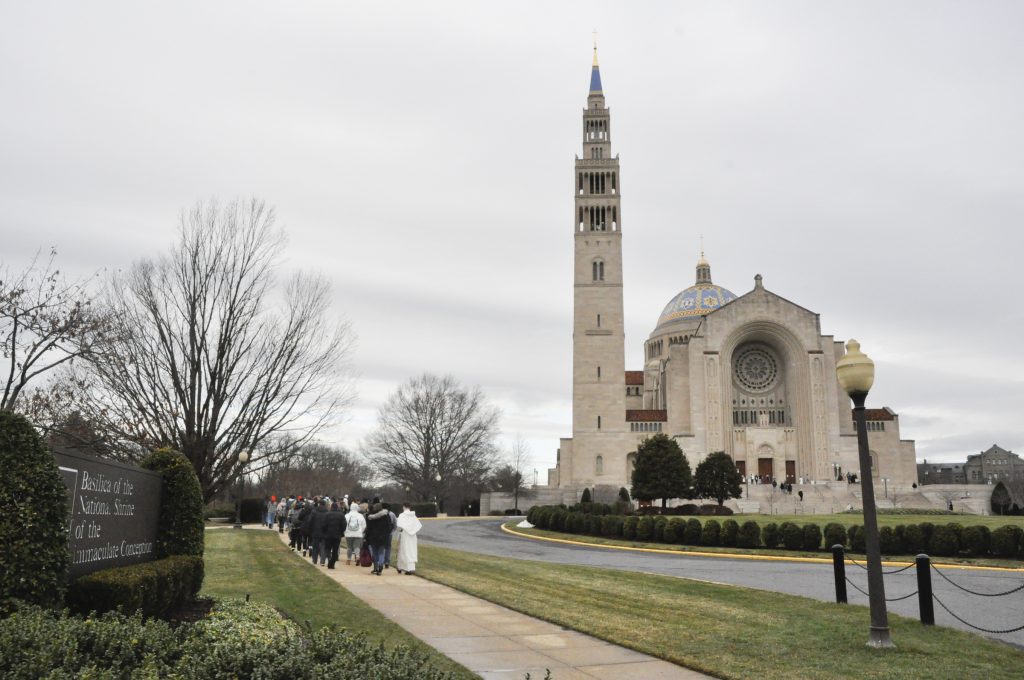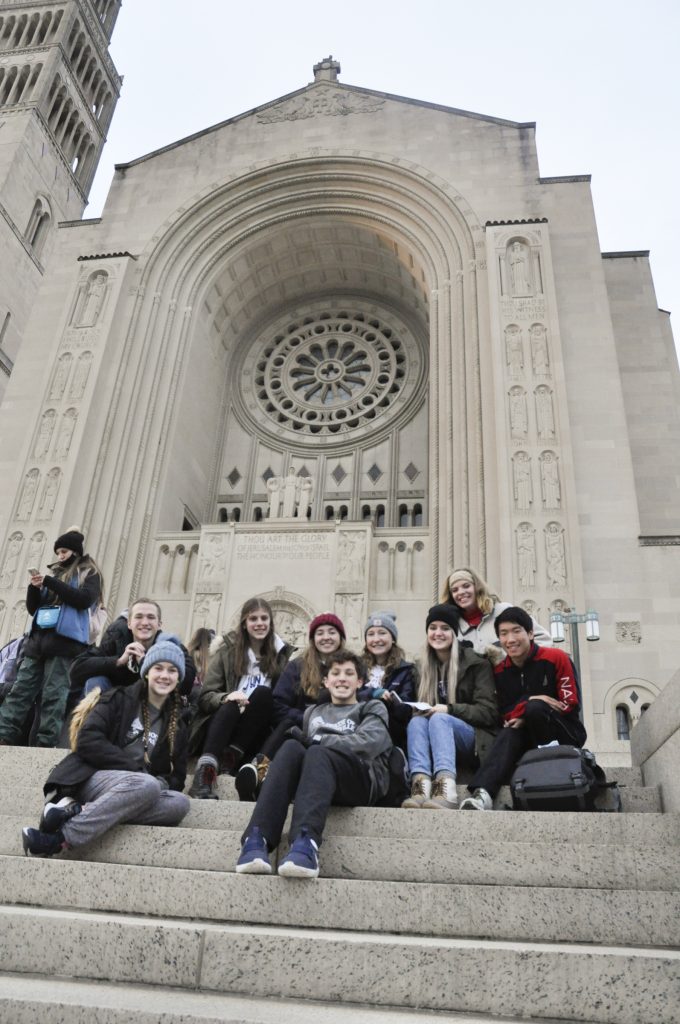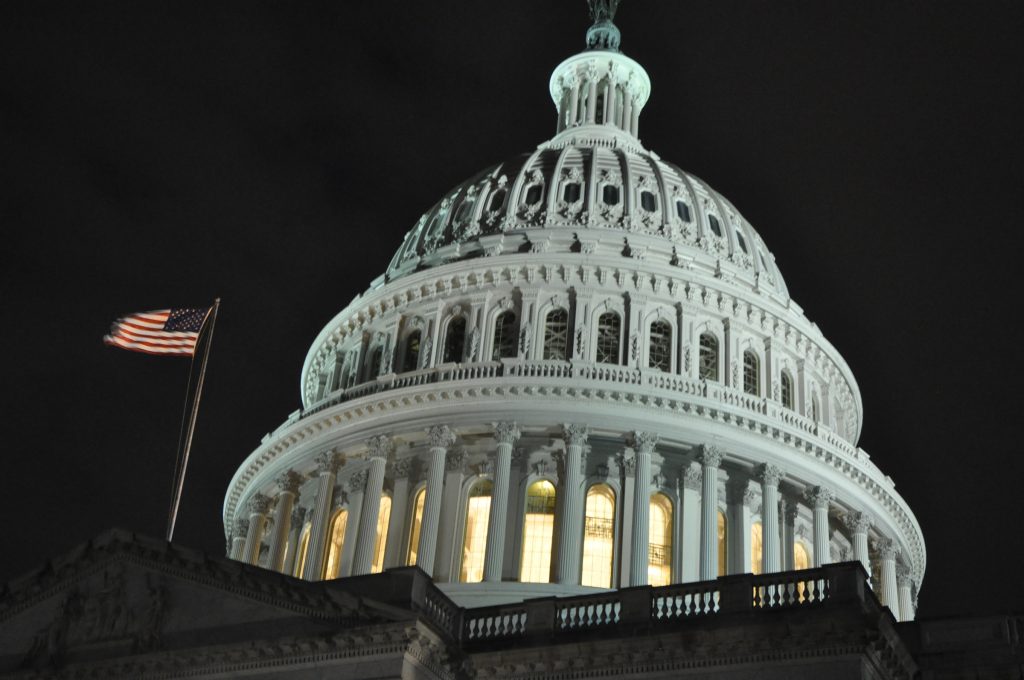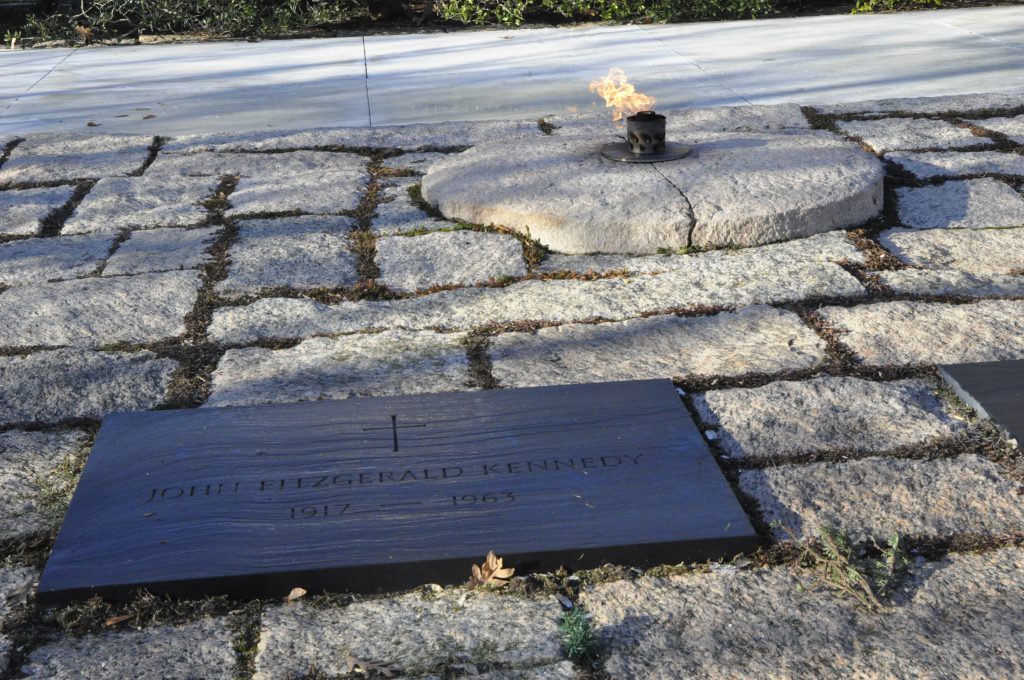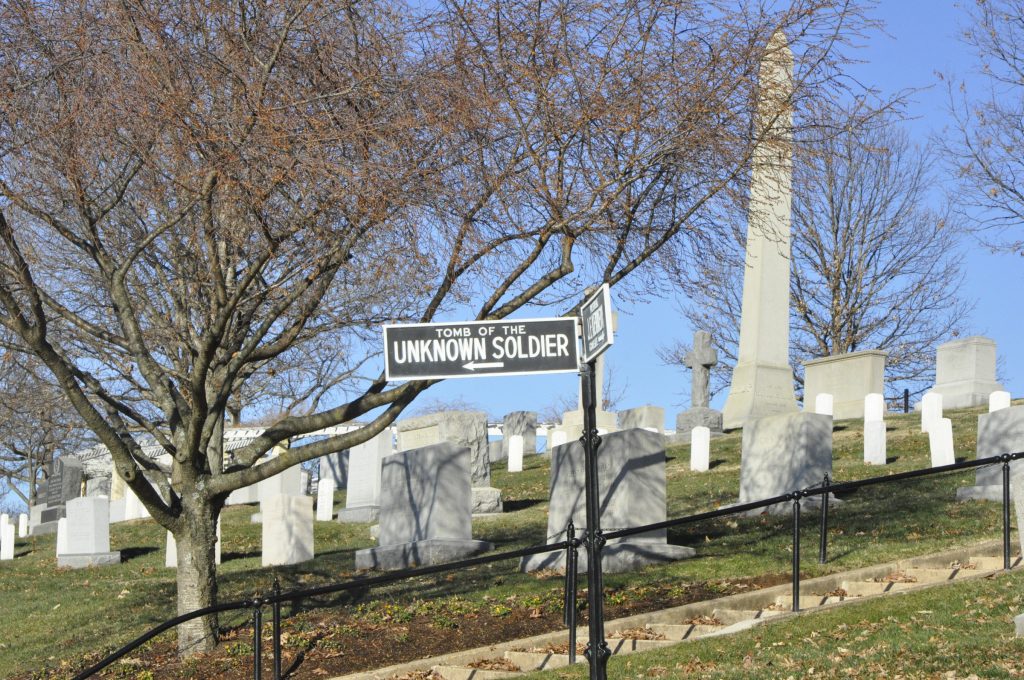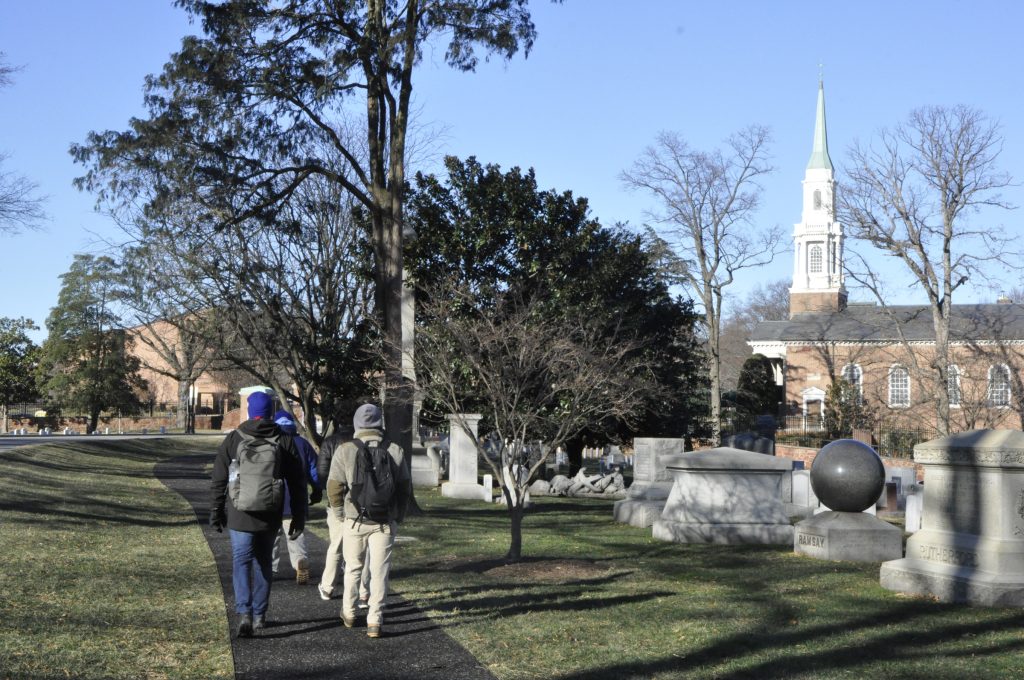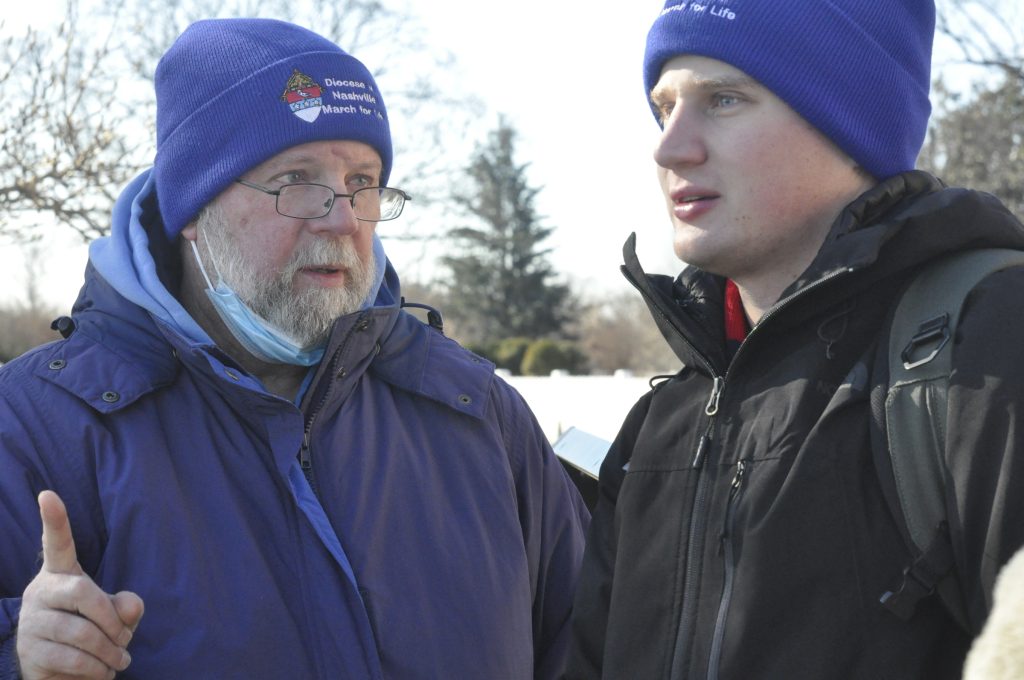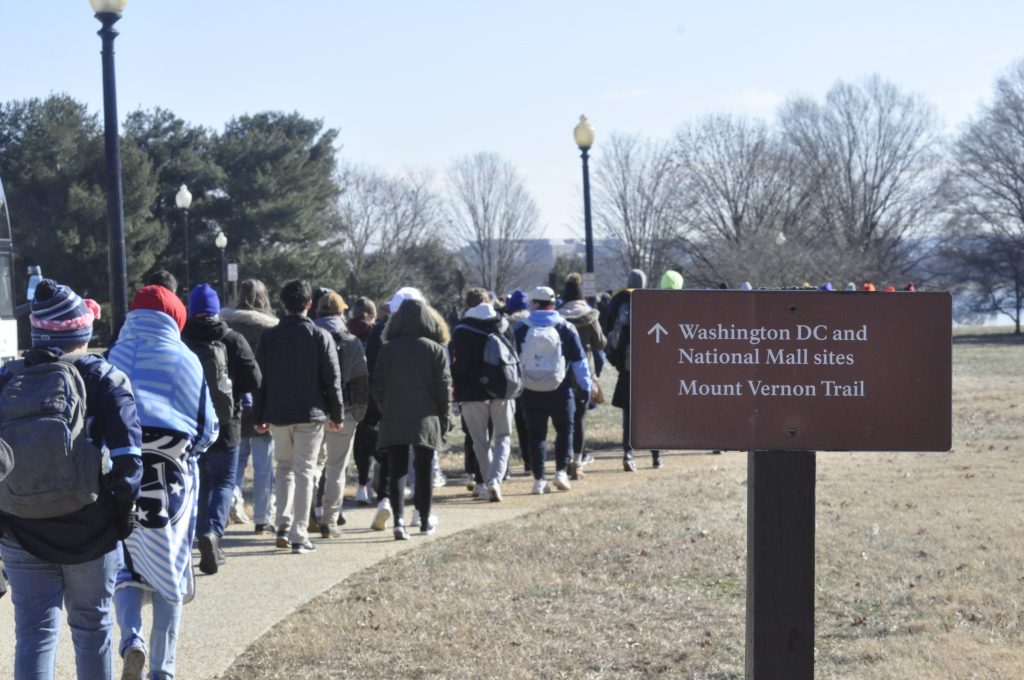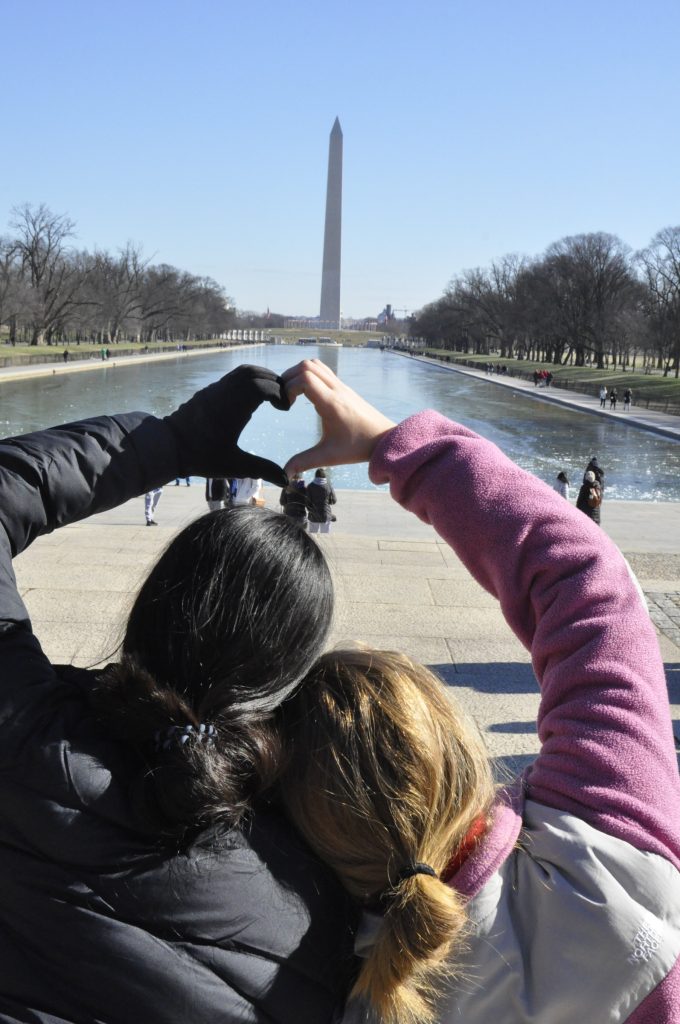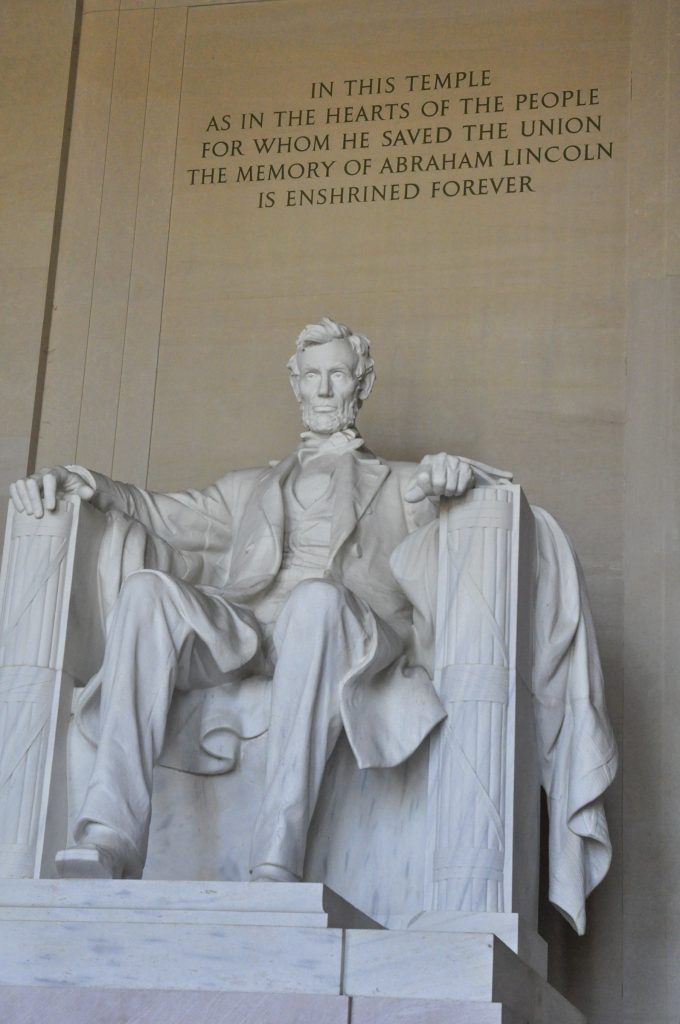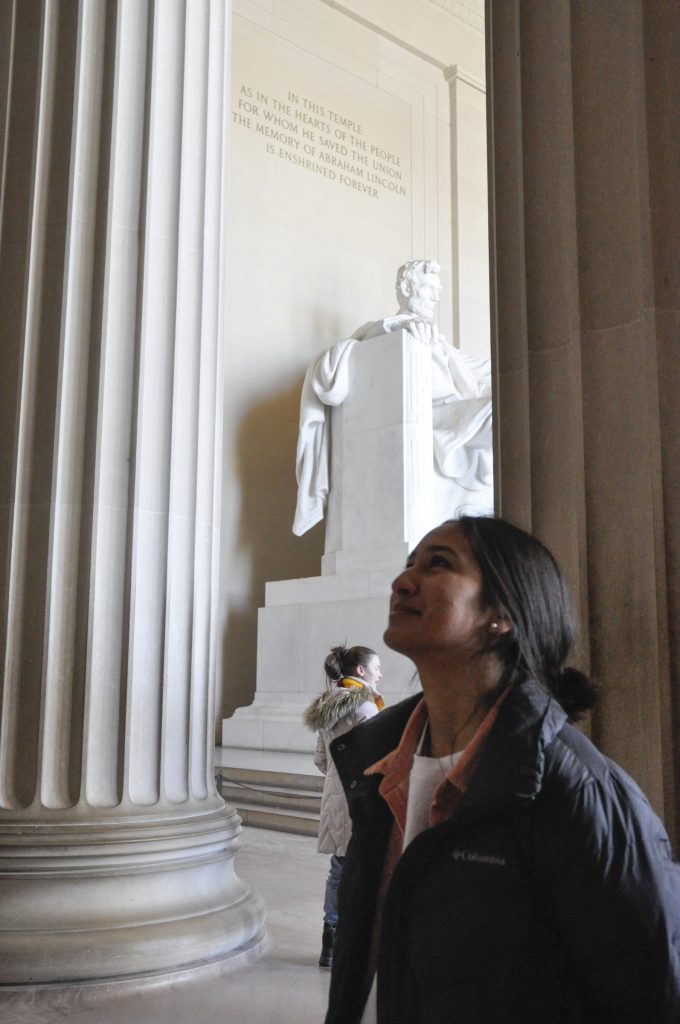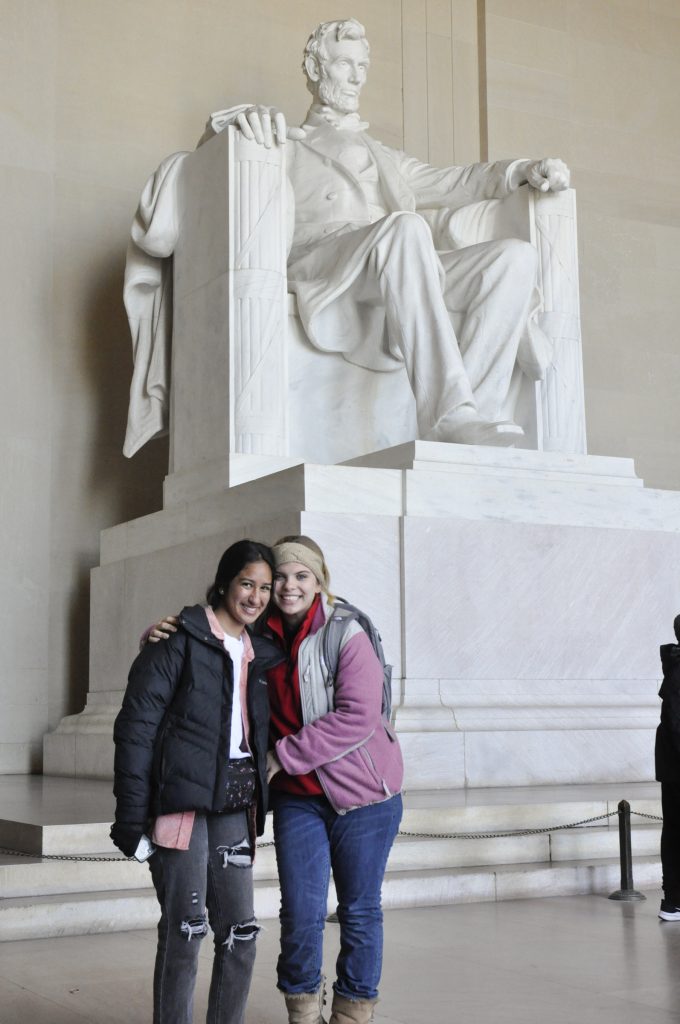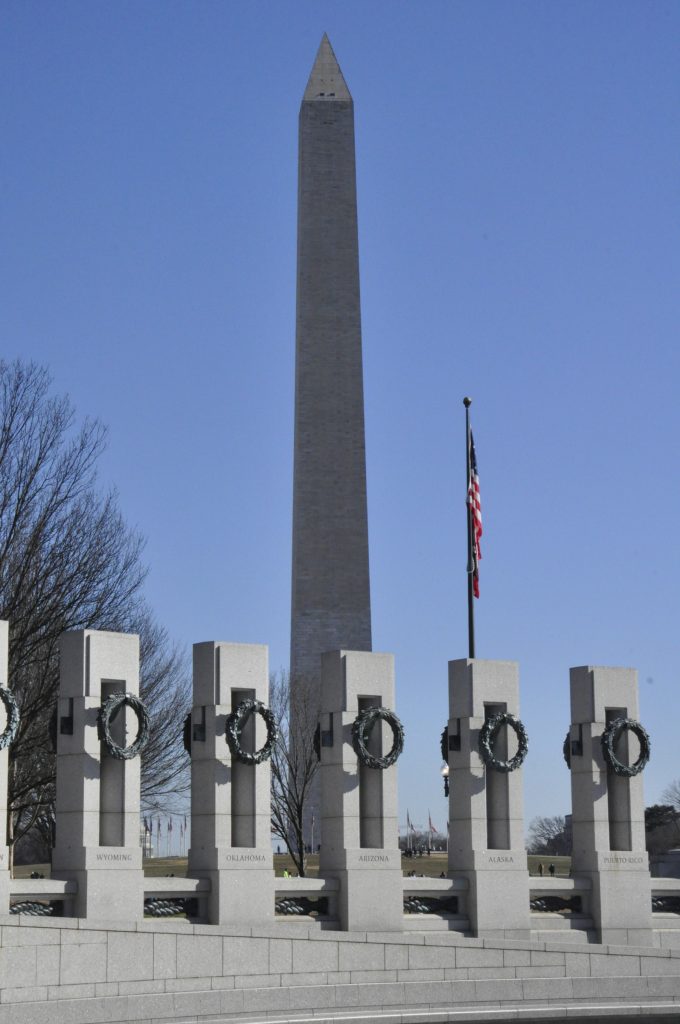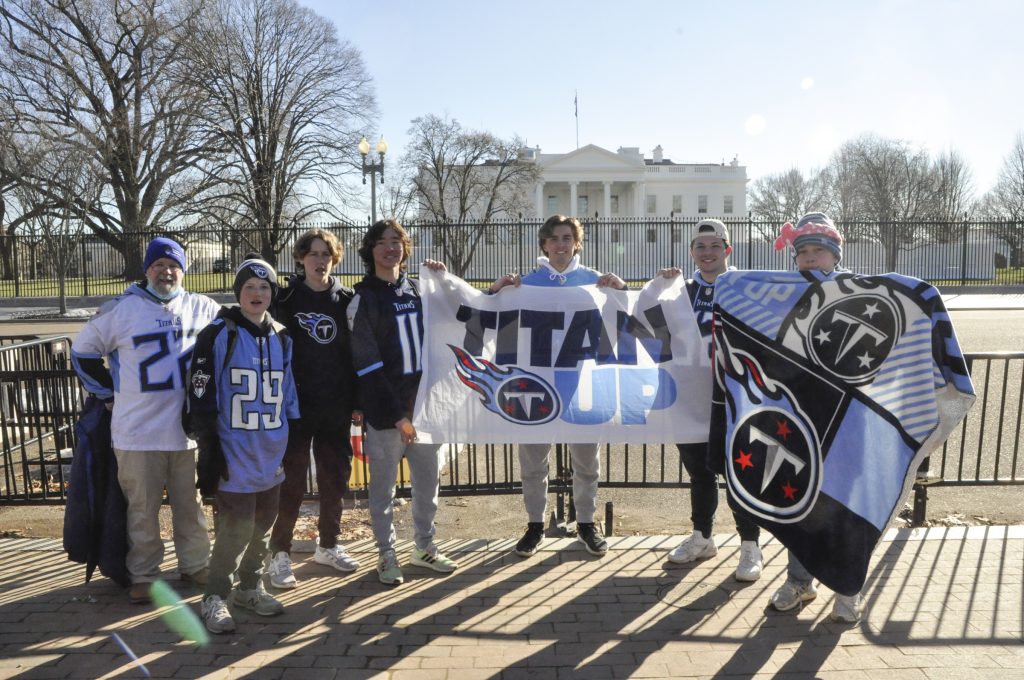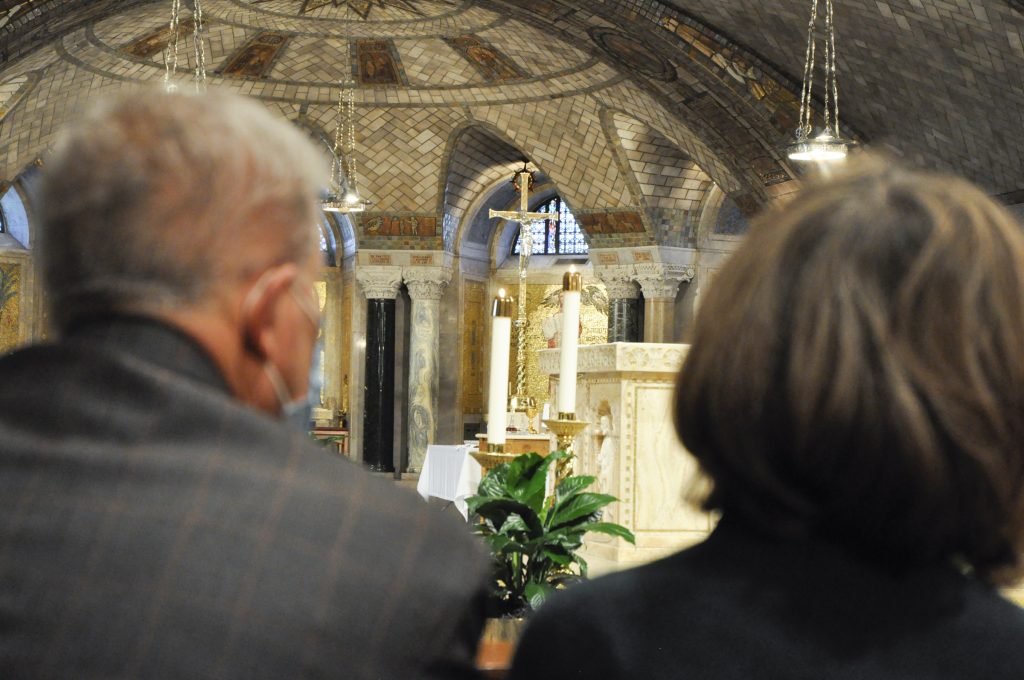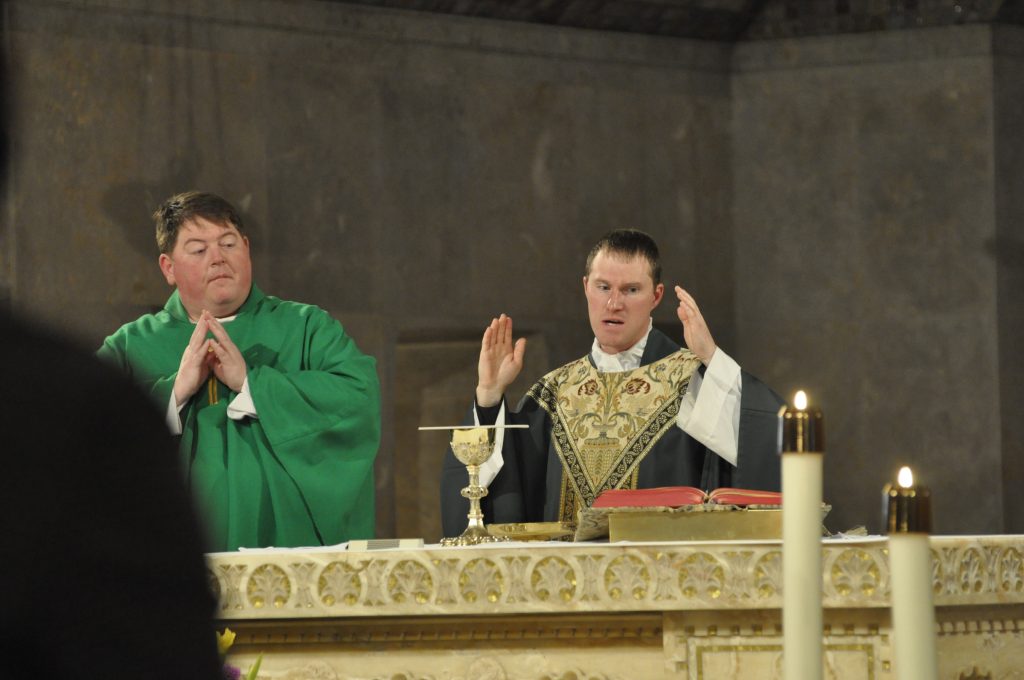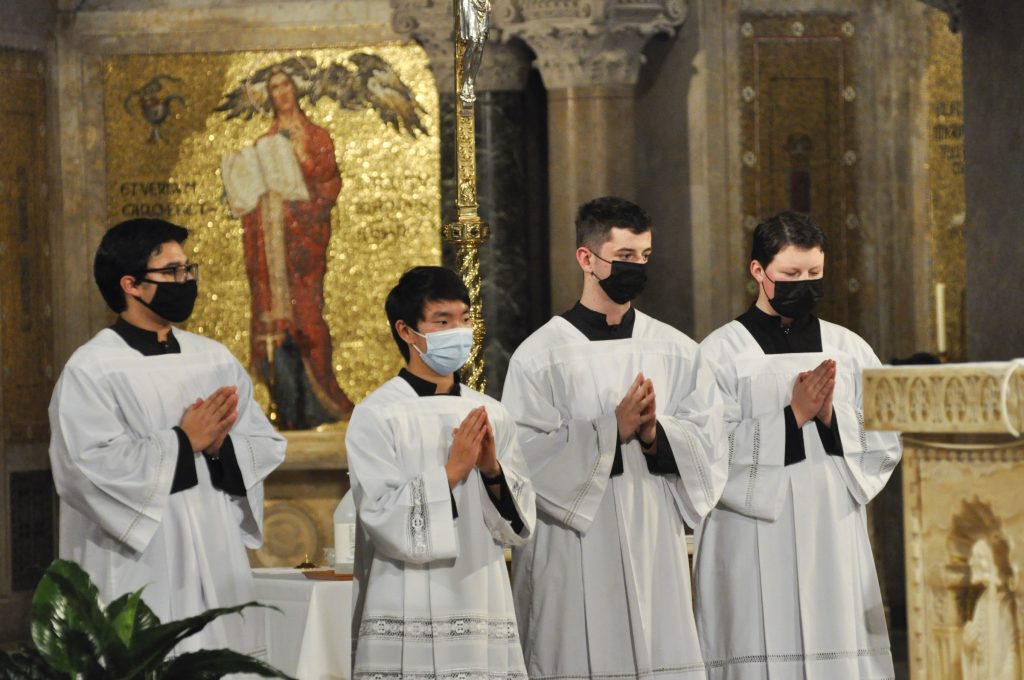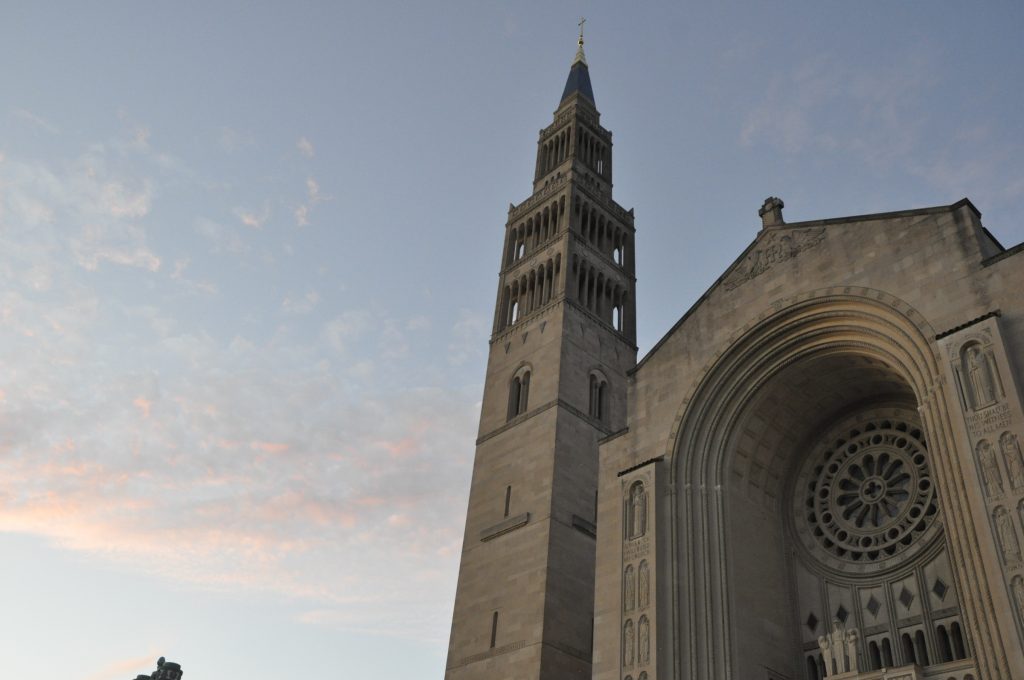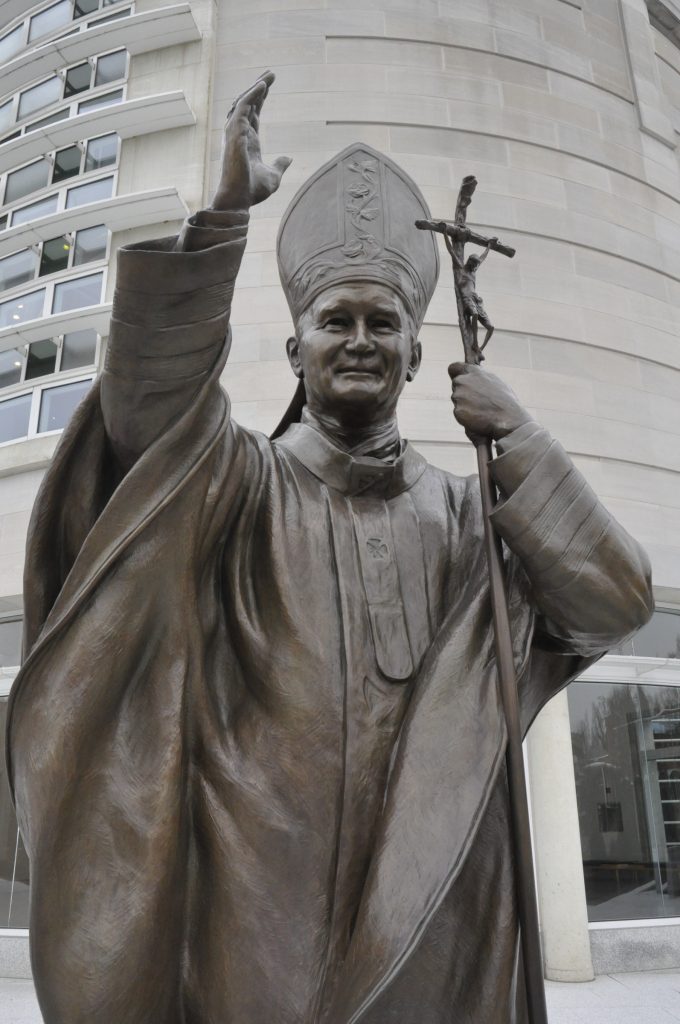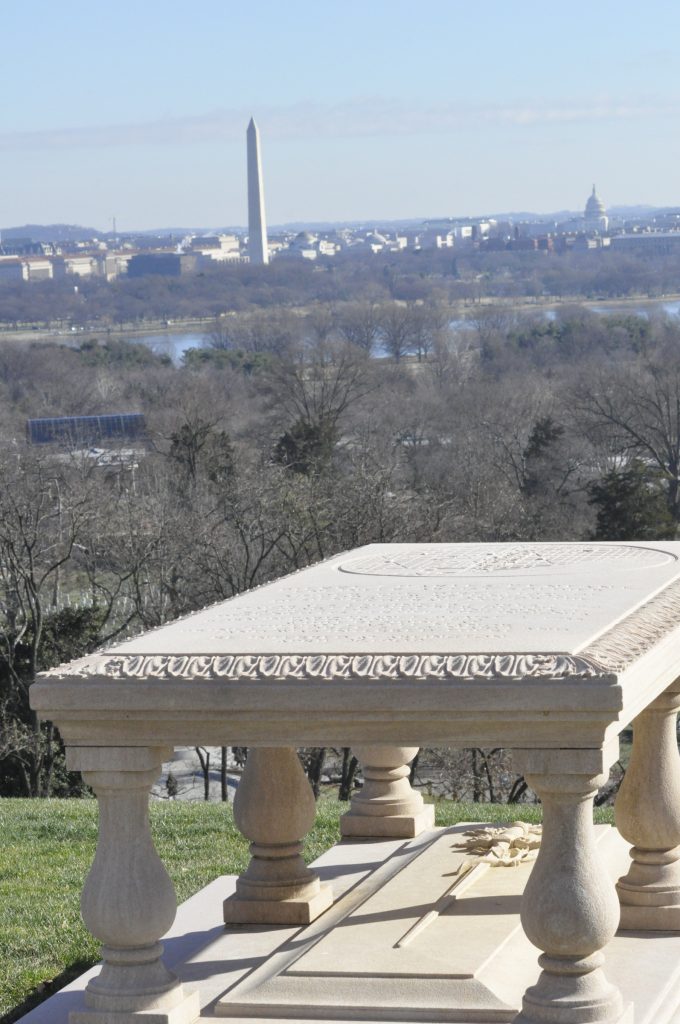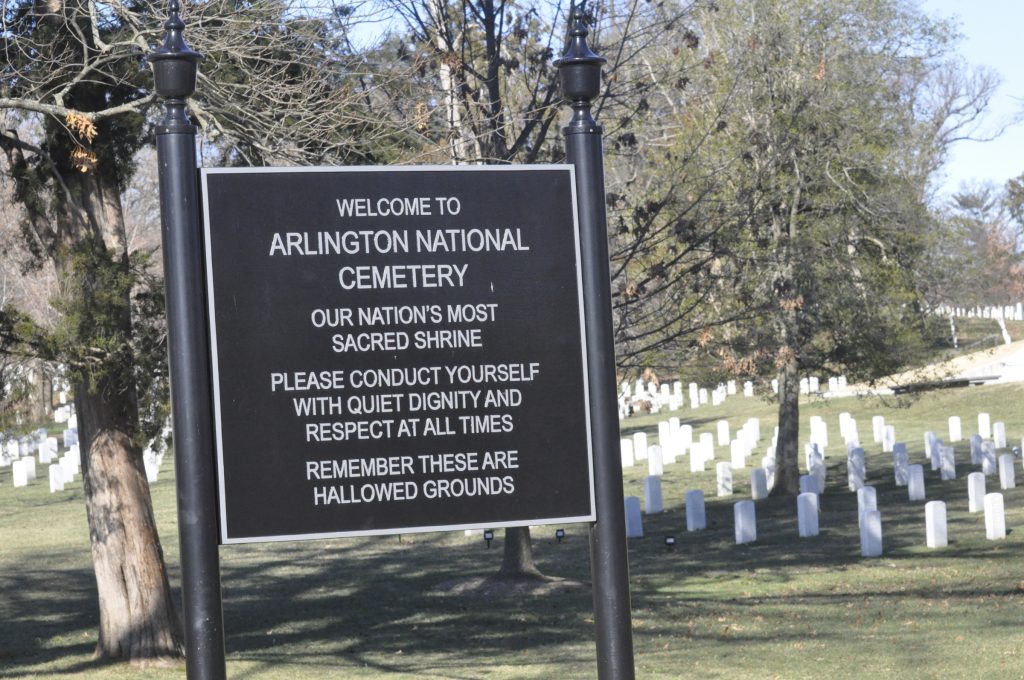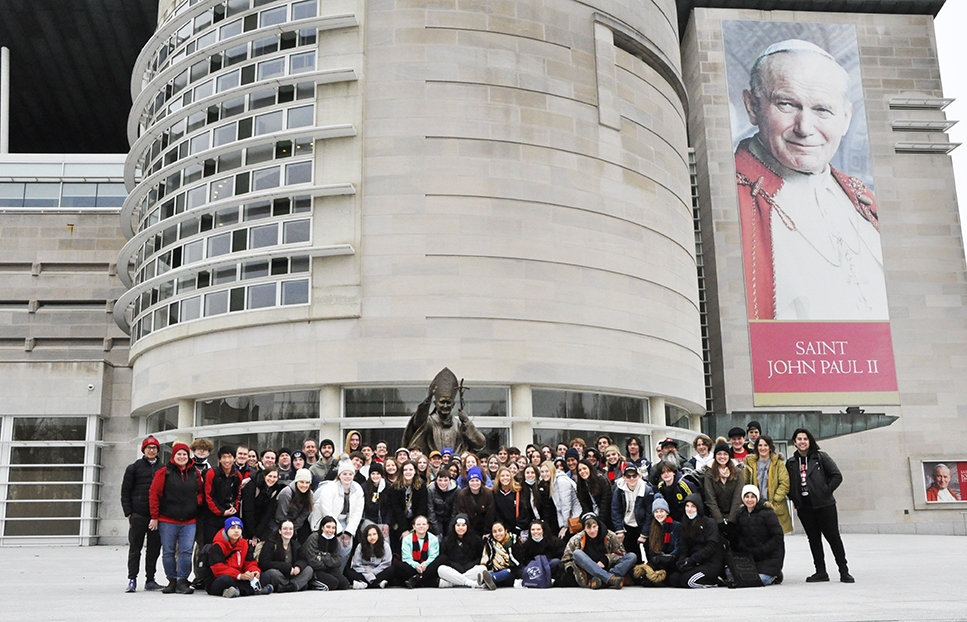
Protecting all life “from womb to tomb” was the mantra as 80 youth, seminarians, clergy and adults participated in the Diocese of Nashville Office of Faith Formation’s Pro-Life and Human Dignity Pilgrimage Jan. 20-23 in Washington, D.C.
“Our pilgrimage was an amazing experience for our participants. I have heard many great things from many of the teens as well as adult chaperones,” said Shelby Conner, assistant director of youth and young adult ministry for the diocesan Office of Faith Formation. “We enjoyed seeing the sites of D.C., but, most importantly, allowing teens the opportunity to stand up for the right to life was an experience that I hope they carry with them forever.”

MBA students pay respects to late teacher at Arlington
Vanderbilt University alums preparing for life as Dominican friars
Throughout the pilgrimage, participants were encouraged to go through each day reflecting on a saint that represented what being pro-life and respecting human dignity was all about. And the first was the man responsible for the celebration all about the youth, “World Youth Day.”
St. John Paul II
After beginning with Mass in the hotel ballroom on Thursday, Jan. 20, Bill Staley, director of new media evangelization for the diocese, spoke to the youth about St. John Paul II, who was pope from 1978 until his death in 2005.
Throughout his life, he encountered many evils and sad moments. He witnessed the deaths of his mother, two siblings, and his father throughout his childhood and years as a young man. He endured life under the oppression of the Nazis during World War II and the Communists in the years that followed. During his papacy, he watched the genocide in Rwanda in horror with the rest of the world, and survived an assassination attempt.
But St. John Paul II always spoke in defense of the dignity of every human life.
“He really wanted the pro-life movement to succeed,” Staley said. “He wrote encyclicals on it, and it was one of the things that really affected his papacy. … The whole point of his papacy is he wanted people to know their worth. Even though there are these terrible intrinsic evils in the world, from Nazis in the 1940s up until abortion in today’s time, he wanted people to know their human value, and that we are made in the image and likeness of our creator.”
With that, the diocesan delegation set off to see and take pictures in front of the U.S. Capitol, the Dominican House of Studies, where they learned about the way the Dominican friars pray and learn, the Basilica of the National Shrine of the Immaculate Conception for a self-guided tour, and back to the Capitol for a night tour.
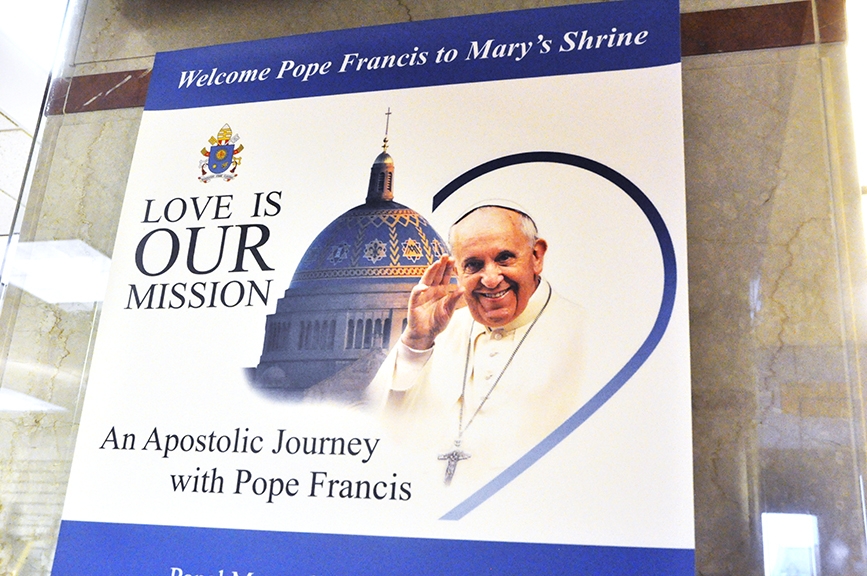
The Dominican House of Studies and seeing several religious at the Basilica proved a highlight for McKenna Sullivan, who attends both Holy Family Church in Brentwood and St. Luke Church in Smyrna.
“When I saw all the different orders (of sisters and brothers), it was beautiful to see,” Sullivan said. “Seeing those who choose and seeing those who are actively discerning the religious life is really awesome because they’re just so intelligent and well-spoken in the faith, and they’re living out their faith in their best way. And just seeing that really spoke to me.”
Noah Burckhard, a parishioner of Our Lady of the Lake Church in Hendersonville, also enjoyed the Dominican House of Studies.
“Learning how the religious live their lives and have their prayer and what they do each day, it sounds like a good life,” Burckhard said. “The Dominicans, they pray from when they get up to when they go to sleep. In between, they’re learning, and it’s given me a deeper understanding for what people do to worship God.”
For Ashley Saavedra, a parishioner of Church of the Assumption in the Germantown neighborhood, seeing the Pieta at the Basilica is what brought the day back to St. John Paul II.
“Seeing the Pieta in life-size form, that was very touching to see,” Saavedra said. “It reminded me of the sacrifice John Paul II made with his family. Knowing what he went through and then seeing everything that our Blessed Mother Mary went through, it was that same sort of sacrifice that the saints take after.”
St. Gianna Beretta Molla
As the group prepared on Friday, Jan. 21, to attend the 49th annual March for Life, Julianne Staley, director of faith formation at St. Edward Church, talked to them about St. Gianna Beretta Molla, and her personal connection to the 21st century saint.
Both St. Gianna and Staley’s mother, Marianne Staley, experienced complications with their fourth pregnancies and were encouraged to abort the pregnancies, she said. Both refused even though it meant risking their own lives.
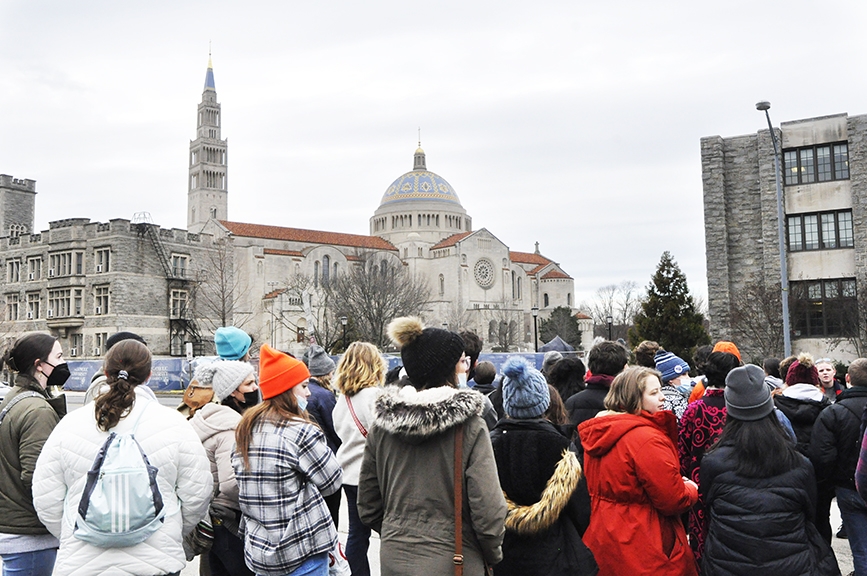
“My mom chose life and to risk her life to have me,” Staley said. “St. Gianna did the same thing.”
Staley’s mother survived; St. Gianna did not. Her 2004 canonization proves that “we are all called to be saints,” Staley said, before reminding the students on the pilgrimage that by marching, they could be making a difference. “The March for Life is the only march where you’re marching for others. We’re marching for those babies who don’t have a voice for themselves.”
Those thoughts were ones that resonated with several of the students.
“I’m also my mom’s fourth child and that idea that a pro-life stance can affect so many people so greatly is powerful,” said Carlisle Brown, a parishioner of Our Lady of the Lake. “It was such a great sacrifice for St. Gianna to have chosen life, and it was the right decision even though it led to her death.”
“St. Gianna is a role model to me of what I want to be when I’m a mother because she sacrificed her life for her baby,” added Madeline Kopf, a parishioner of St. Philip Church in Franklin.
St. Maximilian Kolbe
Day three of the pilgrimage began with the story of St. Maximilian Kolbe, a Franciscan monk who gave his life while imprisoned at Auschwitz Concentration Camp.
When it was thought that three prisoners had tried to escape, the Nazis decided to select 10 prisoners to go to the starvation bunker as punishment. When one of the selected expressed concerns for his wife and children, Maximilian Kolbe offered to take his place.
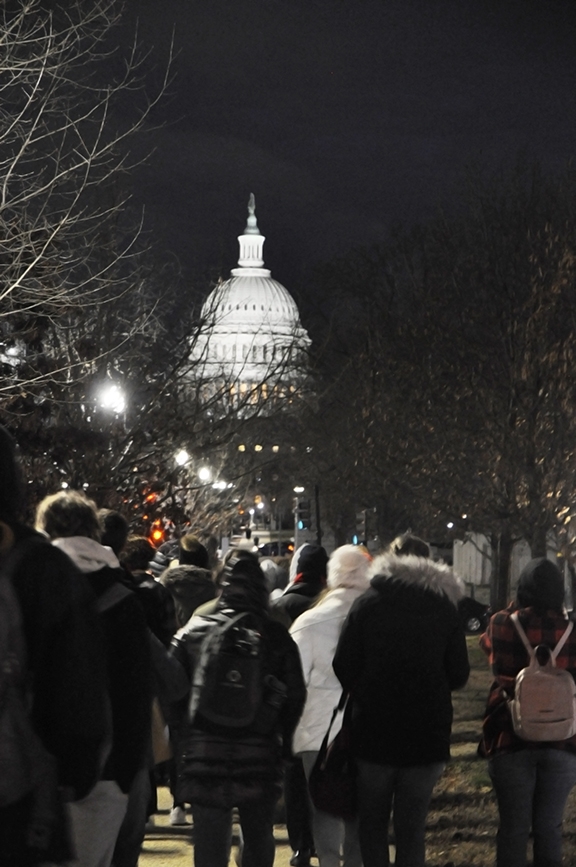
St. Maximilian “led the other nine prisoners in prayer and in singing hymns to Mary. Whenever the guards would come and check on prisoners, it was noted that he was always on his knees praying in the middle of them,” explained Father Andy Bulso, chaplain of youth and young adult ministry for the diocese and pastor of St. Edward Church.
Eventually, eight of the prisoners succumbed to starvation. Then, after two weeks without food, in order to clear the bunker, St. Maximilian and the other prisoner were given a lethal injection.
“When Pope John Paul II did his canonization in 1971, two interesting things happened,” Father Bulso said. “The man who Maximilian Kolbe gave his life for was present at his canonization. Then, John Paul II walked out in the color red, proclaiming Maximilian Kolbe to be a martyr, especially for the circumstances of his death in the concentration camp.”
It’s an example that Father Bulso encouraged the youth to think about.
“Can you imagine being in that concentration camp with all this cruelty and savagery? What a dark place. It would be so easy to just give up, to lose hope, to despair,” Father Bulso said. “But he held on, and he never stopped looking for ways to love, to give his life for others, and that’s an amazing example for us.”
That theme of sacrifice was carried throughout the day as the students visited Arlington National Cemetery where they witnessed the changing of the guard at the Tomb of the Unknown Soldier and walked across the Arlington Memorial Bridge toward the National Mall where they visited the Lincoln Memorial, the Vietnam Veterans Memorial, the National World War II Memorial and the Washington Monument.
The day ended with a Vigil Mass in the Crypt Church beneath the main sanctuary of the Basilica, which was celebrated by Father Bulso and Father Andrew Forsythe, pastor of Sacred Heart Church in Lawrenceburg.
During his homily, Father Bulso emphasized the importance of “rejoicing in the Lord must be your strength,” as he spoke about the March for Life and the message behind it.
“There is a particular joy about the march because it is ultimately our faith that draws us here. We ourselves live … in the in-between times. What I mean is this. The Messiah has come. … He has died for us. He is risen. He has opened for us the way to eternal life. He has established the Church,” Father Bulso said. “But we are in the in-between time. He will come again. There is a fulfillment that has not yet taken place; a fulfillment that will happen at his second coming. We are in the already and not yet … and rejoicing in the Lord must be our strength.
“One thing that will help you stay connected to the source of our joy, something that will help our own conversion of heart that we might then lead the world to a conversion of the heart: rejoicing in the Lord must be our strength,” he said. “And how can we not rejoice when our Lord is present here, giving himself to us in the Holy Eucharist, his very body and blood to strengthen us, to sustain us in this pilgrimage, this in between time as we await the fulfillment of his kingdom and the full establishment of the Gospel of Life.”
St. Edith Stein
The final day of the pilgrimage, Sunday, Jan. 23, focused on Carmelite sister St. Edith Stein. Like St. Maximilian Kolbe, St. Edith was a martyr during the Holocaust, which is why Michaela Miller, youth minister for St. Philip Church in Franklin, said she chose her as her Confirmation saint.
Miller enjoyed studying World War II, but her connection to St. Edith Stein became more prevalent throughout her life.
St. Edith Stein was “known for her writings on women’s roles in the Church, and here I am working as a youth minister, so I feel sure that is not a coincidence,” Miller said, as she spoke with the youth. “Know that your Confirmation saint chose you for a reason and has been interceding for you, so continue to pray to them and ask for their intercession.
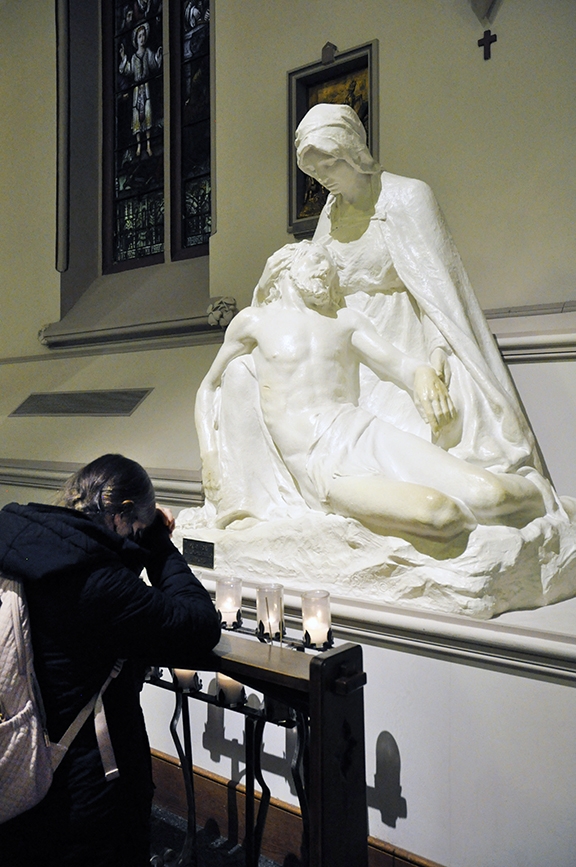
“St. Pope John Paul II is known for writing Theology of the Body, which is really a doctrine about how we are made in the image and likeness of God,” she continued. “Edith Stein aligned herself with that” as shown in her doctoral thesis on empathy, which had many similarities.
While the itinerary for the day included trips to Ford’s Theater, St. Patrick Church, the oldest church in Washington, and the National Portrait Gallery, that connection circled back around at their final stop at the St. John Paul II National Shrine. There, after taking a moment to pray in front of a relic of St. John Paul in Luminous Mysteries Chapel, the group prayed the Divine Mercy Chaplet together as the pilgrimage came to an end.
Growing in faith
When all was said and done, the youth reflected on how the trip helped them grow in their faith.
Thomas Schiermeier, a parishioner of Our Lady of the Lake, noted how wonderful it was to see people from so many churches in the diocese come together “fighting for one cause.”
“It helped me figure out that the Church really is one person and one body in Christ,” Schiermeier said. “If we all have the same mindset, we can try to make a difference.”
Abigail Aud, a parishioner of St. Stephen Catholic Community, said meeting and being around the other youth stood out to her, particularly Saavedra, who would wear a veil while praying or attending Mass.
“I’ve known about (wearing veils) but it was really cool to get to see someone who is actually really into them and just seeing how deeply she connects with her faith,” Aud said. “I’ve seen her praying a lot, and it really lit a fire in me. I want to be like that. I want to be a little more prayerful, and it was just really nice to see that.”
Sullivan said the pilgrimage helped her realize how much she loves prayer and spending more time with Jesus.
“I’ve learned that my faith is a big part of who I am. I know it’s going to be hard going back to school and being around people who disagree with me or who aren’t Catholic, but I realize that I have to take that faith back home with me even when the world is telling me not to,” Sullivan said. “You still live out your faith regardless … and approach all situations with love.”
